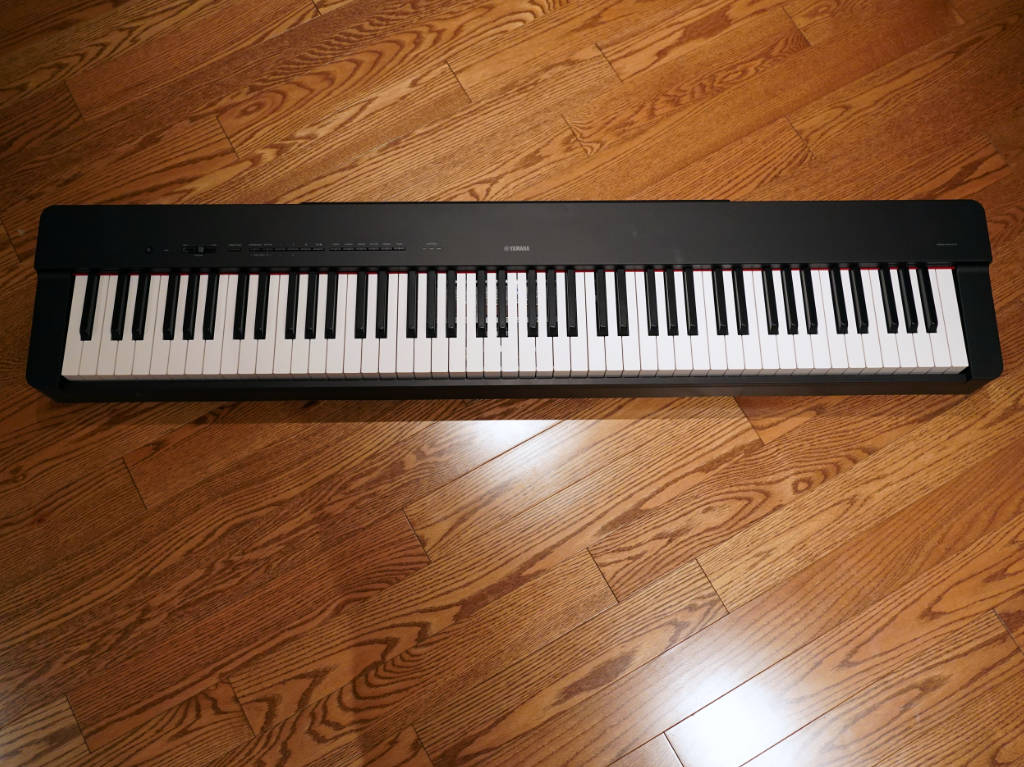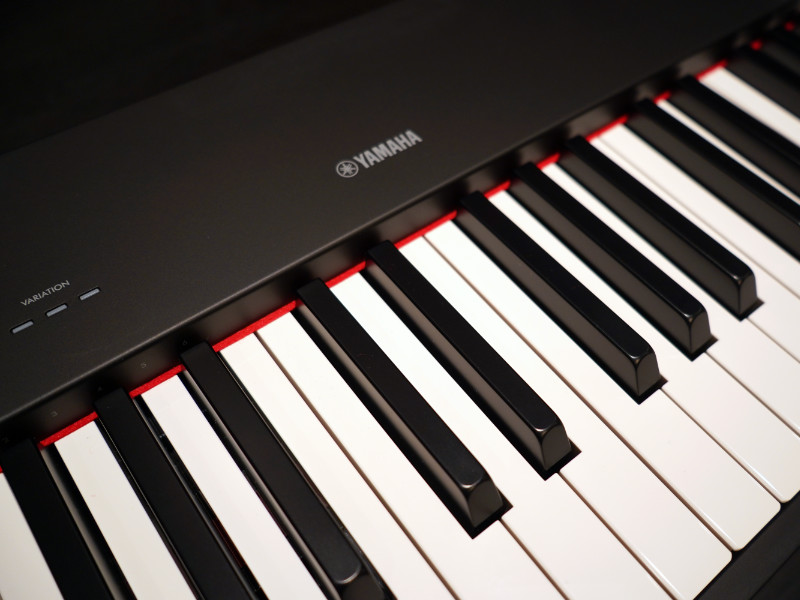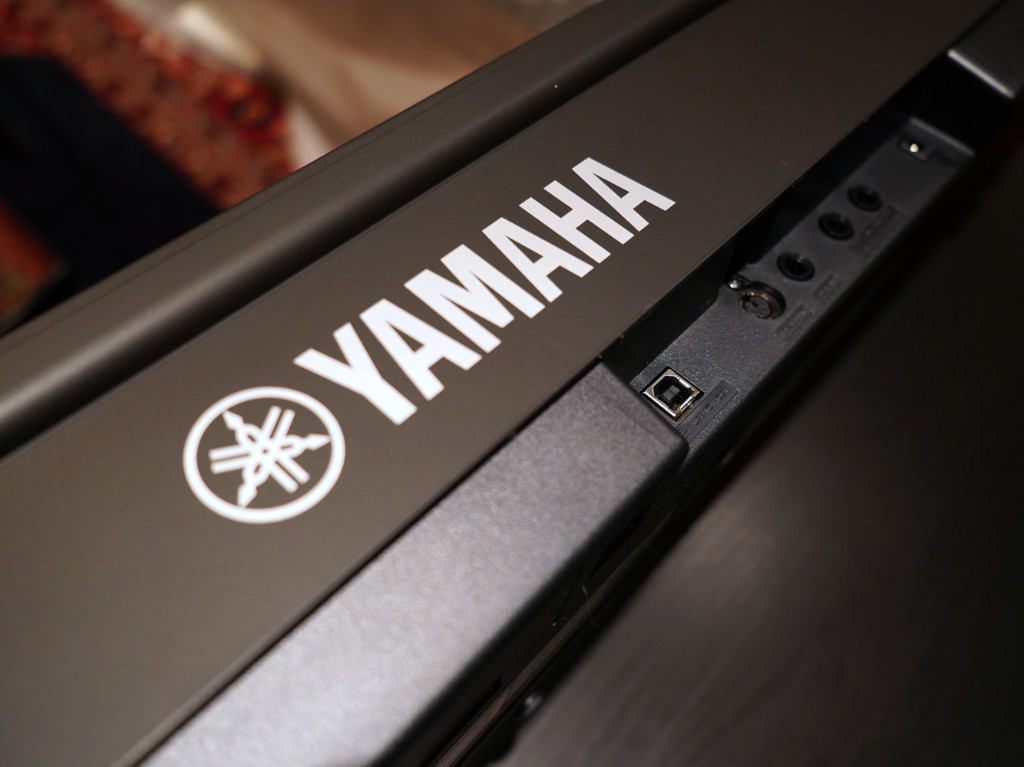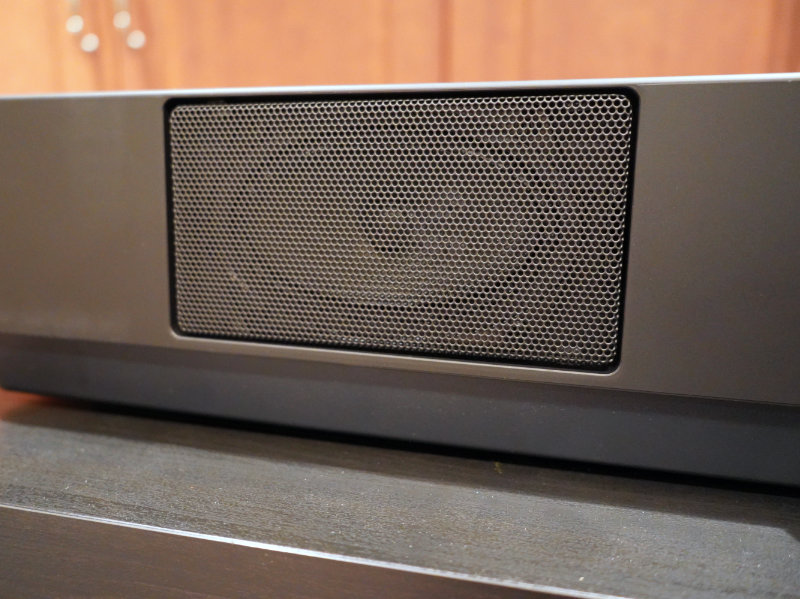
Yamaha revitalized its P line recently. This series features portable options that are beginner-friendly and offer great value for your money. The P-225 digital piano is one of the new additions and it will interest a few different types of players. I took it for a spin recently and I’m here to report on how it sounds and feels.
First, make sure to watch this short video discussing the various features and connections, my initial impressions, and a little taste of the main piano tone, so you know how it sounds.
Design of the Yamaha P-225 digital piano
The P-225 is a compact piano that is easy to transport and offers high quality features. It has been designed with a small form factor to make sure it fits into any living situation and vehicle. It will fit on a desk or a dedicated keyboard stand.
The limited number of features and buttons will keep your focus on the playing and not countless menus. A pair of 7W, 12cm x 8cm speakers amplify the sound so you can easily fill any size of room. If ever you feel your sound is getting lost in a noisy or loud environment, you can engage one of two modes of Sound Boost. It’s an effective tool to increase the volume and attack of your instrument.
Playing the Yamaha P-225 digital piano

The action on the P-225 has been redesigned for two new additions to Yamaha’s P line (the other being the P-145). It is a weighted and graded action that fits in the compact cabinets of these latest models. Each key has a certain resistance to emulate the feel and internal mechanism of an acoustic piano.
The graded aspect refers to the varying tension of the strings that make up the notes on a piano. The lower register will feel heavier while the high register will be lighter. This fact adds extra authenticity to the keyboard.
A varied collection of sounds
The P-225 presents a collection of 24 different sounds. The one you hear in the video is the main piano tone. It is based on one of Yamaha’s top of the line grand pianos—the CFX. There are also three other piano sounds that offer complimentary options.
In addition, you’ll find three electric pianos, a synth piano, four organs, an electric clavichord (think clavinet), a vibraphone, two harpsichords, two sets of strings, a choir, a synth pad, and four basses. This offers a wide range of sounds and gives you access to a lot of common tones directly on the instrument. You’ll also be able to experiment with layering two sounds, creating interesting textures for your creative needs.
You can additionally experiment with four different reverb types, turn on an EQ adjustment for when you are playing against a wall, and benefit from VRM Lite (Virtual Resonance Modelling). VRM Lite is a clever emulation of how the neighbouring strings of the notes you are playing ring out when you use the damper pedal.
Included rhythm accompaniments
A P-225 feature more experienced players will appreciate is the inclusion of rhythm accompaniments. These are percussion backing tracks which you can play over and use to practice your chops or song ideas. There are 20 different styles to explore and they cover a wide range of needs. You can even cue intros and endings to perform in front of an audience in a more musical manner.
Overall, Yamaha’s new GHC action is quite pleasant and delivers an authentic feel. It has a nice resistance and the keys themselves have a nice texture. The tones on the P-225 are quite convincing, especially through headphones. Being a compact instrument, the built-in speakers aren’t the most impressive or detailed. They do get the job done, though, for home practice. You can always use the dedicated outputs to connect to an amplifier or PA system if you want a better amplified sound.
Yamaha P-225 connectivity

The back panel of the P-225 piano has several ports so you can use it in different ways or with various peripherals. You get the obvious headphone jack (two even, for late night duo practicing) and sustain pedal input. You can also connect a pedal unit to play with all three pedals. There’s a stereo out to connect to a mixer, amplifier, or PA system, so you can apply it in many different contexts that require some more volume.
One of the best features though is the integrated audio interface. This is slowly becoming the norm and it makes our lives as musicians easier. You can simply plug in your digital piano and record directly into your software. This is very convenient, and I used this feature to record the audio you hear in the video. You can also control external sound banks to add to your collection of tones.
Yamaha P-225 piano accessories
The P-225 I received for review came with a music stand to hold sheet music, power supply, and simple sustain pedal. These are basically the essentials you need to get started properly. There are also several optional accessories you might want to consider.
For a more traditional piano look, you can get the dedicated Yamaha L-200 stand. It adds a nice, classy touch to your instrument. You can further enhance your piano experience with a triple pedal unit (LP-1 or FC35). It adds the soft and sostenuto pedals. If you plan on carrying your keyboard with you, you can also consider Yamaha’s soft case, the SC-KB851. Finally, if you’d like to use your iOS device wirelessly via Bluetooth, you’ll need to invest in the UD-BT01.
Who is the Yamaha P-225 for?

The P-225 is a nice keyboard to start on. It’s simple, but it has excellent build quality. The feel is ideal for beginners, because it emulates the resistance you’d find on an acoustic piano. Your technique will develop accordingly and you won’t be destabilized if you sit at such an instrument. There is also interesting future proofing thanks to the USB connection which you can use to record ideas, practice, and play with external sound banks. Furthermore, the included rhythms are great for practice, composition, and performance.
More experienced players should also consider the P-225. It’s a great portable instrument, so it’s useful for those that move around a lot to rehearsals, lessons, and concerts. It sounds good enough for live work, but it’s an excellent backup option. It’s also ideal if you don’t have a lot of space, but still want to keep a quality keyboard at home.
For those interested in an even more streamlined model, check out my review of the Yamaha P-145 digital piano.
You can shop the Yamaha P-225 on Best Buy’s website or read through the digital piano buying guide for help in understanding what type of keyboard might be right for you.





